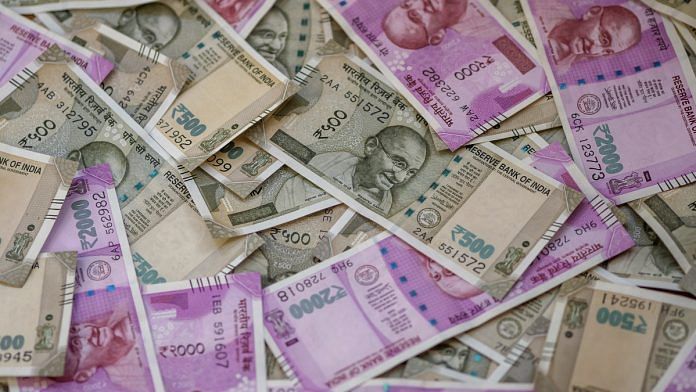Mumbai: With India’s plans for its inaugural overseas bond sale shrouded in confusion, investors are assessing the government’s options for the $10 billion offering.
The departure of the official handling the sale and reports of opposition from the prime minister’s office have left investors wondering if India will press ahead with a foreign-currency debt sale, opt for the issuance of rupee-denominated notes known as Masala bonds, or ease foreign ownership limits on local markets instead.
On Sunday, Finance Minister Nirmala Sitharaman was quoted by the Economic Times as saying that her office isn’t reviewing the plan, which has faced criticism from the start. Yields on the benchmark 10-year bond climbed 16 basis points last week, the most since last April, as traders speculated that the government could instead end up selling more local debt.
“Investors want clarity, clear communication and better visibility,” said Sergey Dergachev, senior portfolio manager at Union Investment in Frankfurt. It would be “quite unfortunate” if India doesn’t issue a dollar bond given the expectations from investors, he said.
Options for the government include:
Bond Sale in Foreign Currencies
There will be huge appetite should the government go ahead with the sale in foreign currencies, according to Thu Ha Chow, portfolio manager at Loomis Sayles Investments Asia.
“If I were sitting in Europe and someone said to me, ‘why are you under-allocated to Asia?’, India will be an easy one for me to do,” she said.
A sale will shift part of a record 7.1 trillion rupees ($103 billion) of planned government borrowings abroad, leaving private companies with more room to borrow. The downside is that the issuance could increase India’s exposure to global shocks.
“Expanding sovereign liabilities could magnify macro risks if essential reforms on improving public finances remain inadequate,” said Suvodeep Rakshit, an economist at Kotak Institutional Equities Ltd. in Mumbai. “Historical experiences of countries with high exposure to foreign capital and weak macro fundamentals such as Argentina, Thailand, Brazil, Turkey have not been pleasant.”
Also read: Modi govt’s plan to sell yen debt has one more hurdle: It’s too much
Masala Bonds
Selling rupee debt abroad will be about 150 basis points cheaper for the government, than doing a hedged dollar-bond issuance that is swapped back into the local currency, according to Ajay Marwaha, London-based head of investment advisory at Sun Global Investments Ltd. Another advantage is that the currency risk lies with the investor, not the issuer.
While a sovereign Masala bond may act as a benchmark for other Indian issuers, there are concerns over investor appetite for $10 billion of rupee-denominated debt.
Ease Foreign Limits
The government could consider raising the cap on foreign holdings of local bonds, currently at about 6% of the total outstanding. The world’s mounting stock of negative-yielding debt is drawing global funds to India, with inflows totaling 240.5 billion rupees in the past two months.
The strategy is fraught with risks though as the rupee could come under pressure during a crisis, said Indranil Sen Gupta, India economist at Bank of America Merrill Lynch. The tight limits helped shield the country from outflows that other emerging markets suffered during the global financial crisis, he said. -Bloomberg
–With assistance from Ruth Carson.
Also read: India’s maiden $10 billion foreign bond debt sale deal is fraught with confusion







The sensible, long term thing for India to do would be to start a slow but honest, purposive process of fiscal consolidation. $ 103 billion is going up in smoke, most of it to pay interest on the existing stock of debt. We court investors desperate for yield and when the tide turns, assail them for being fickle.